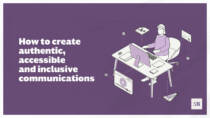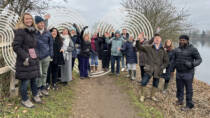How to create cost-effective agency partnerships
By Sally Pritchett
CEO
Learn how to keep project costs under control with practical tips for building cost-effective agency partnerships.
Learn how to keep project costs under control with practical tips for building cost-effective agency partnerships.
Whether you’re planning a global campaign or tackling a one-off project, managing budgets effectively is key to maximizing value. With the right approach, you can avoid unnecessary costs while still achieving impactful results.
Building an effective partnership with your agency starts with clear communication, well-defined expectations, and mutual trust. But even with the best intentions, budgets can creep up in unexpected ways. Understanding these challenges and knowing how to address them will empower you to get the most out of your agency relationships.
When projects go wrong: five common ways costs can creep up
Even the most well-planned projects can run into trouble if certain issues aren’t addressed early. Here are some of the most common ways budgets can spiral out of control and how to spot them:
- Unplanned changes: Stakeholders providing feedback late or in an uncoordinated way can lead to inefficiencies. Try to consolidate feedback before sharing it with your agency.
- Last-minute tweaks: Even small changes late in the process can ripple across multiple deliverables, inflating costs. Ensure content is accurate before design work begins.
- Unclear briefs: A shifting or vague brief can create confusion and lead to additional rounds of revisions. Align on scope and objectives upfront to avoid misunderstandings.
- Scope creep: Requests for “just one more thing” often snowball into costly additions. Include a contingency budget to handle unexpected tweaks without derailing timelines.
- Tight timelines: It’s easy to run out of time and not realise that last minute decisions can impact budgets, but limited time often leads to higher costs from out of hours working or more expensive delivery options.
Our top tips for making the most of your agency budget
Once you’ve identified the potential pitfalls, the next step is setting yourself up for success. These practical tips will help you make the most of your agency partnership while keeping costs under control:
- Communicate clearly: Have verbal briefings as well as written ones, to ensure alignment and minimise misunderstandings. A strong start sets the foundation for success.
- Define roles early: Be clear about what tasks your team will handle internally and where you need your agency’s expertise. This ensures resources are used effectively.
- Plan timelines carefully: Allow sufficient time to avoid the higher costs associated with rush jobs.
- Set aside a contingency budget: Plan for unforeseen challenges to maintain flexibility and keep the project on track.
- Be clear on who your stakeholders are: Identify what level of input each stakeholder will have and when their feedback will be required.
- Streamline feedback: Ensure your feedback is aligned and consolidated from all stakeholders, where possible, to avoid additional rounds of amends which could be out of scope.
By focusing on clear communication, thoughtful planning, and proactive collaboration, you can build a cost-effective partnership with your agency that delivers impactful results. And if you’re looking for an experienced agency partner with over 25 years of expertise working with complex global organisations – we’re here to help.
See More:
How to Work with Agencies (And Get Amazing Results)
Are you new to the marketing and communications industry? Agencies can be the secret to levelling up your career fast, but understanding the art of collaborating with them is essential. In this video, we give you the tools to build strong agency partnerships.
Guide: How to create authentic, accessible and inclusive communications
By Sally Pritchett
CEO
Discover how to create communications that connect with audiences through authentic, accessible, and inclusive messaging in this essential guide.
Inclusive, accessible, and authentic communication has the power to connect, inspire, and drive meaningful change. This manual, How to Create Authentic, Accessible, and Inclusive Communications, is an essential resource for anyone striving to create messaging that resonates with diverse audiences and delivers real impact.
Packed with insights, guidance, and actionable tips, this guide will help you ensure your work is inclusive, accessible, and authentically representative. Whether you’re looking to deepen your understanding, refine your communication approach, or start embedding inclusion into your processes, this manual provides the tools and inspiration you need.
In this manual you’ll discover:
- Why inclusivity in communications matters and how it drives connection and impact.
- What inclusive communications should look and feel like with practical examples.
- How to foster diversity and authentic representation while avoiding tokenism.
- Practical tips for accessibility making sure your communications reach everyone.
- Advice on using AI ethically to support inclusivity and authenticity.
- How to build an inclusive mindset and embrace continuous improvement
Download the guide now and start creating communications that inspire change, connect with audiences, and make a lasting difference.
Choose the right version for you
We’ve created several versions of the manual, each with different accessibility features. Please choose the option that works best for you. If you need assistance navigating these options, don’t hesitate to get in touch with us hello@somethingbig.co.uk.
PDF version
A PDF that can be read out by a screen reader
Dark mode PDF
A PDF in dark mode, that can be read out by a screen reader
Audio PDF
A PDF with the option to be read aloud by an AI voiceover
Video audio
A video of the manual, read by an AI voiceover
Green Monday 2025: Catch up on the sessions
By Sally Pritchett
CEO
Planning your next Green Monday? Find the latest line up and resources here.
Green Monday was a big success!
We said goodbye to Blue Monday – the so-called “most depressing day of the year” – and had a day dedicated to positivity and sustainability.
Together, we NetWalked, tackled the biggest challenges to business change, discussed how to bring stakeholders along the sustainability journey, and explored the power of impactful reporting. And a big thank you to our speakers for their thought-provoking contributions, and to everyone who walked, listened, shared, and connected.
Catch up on Green Monday
Breaking down the 3 big obstacles in business change
Discover how communications can help overcome the common challenges to change and sustain momentum through the ups and downs.
Bringing your stakeholders on the sustainability journey
Learn how to engage employees, customers, investors, and communities with authentic ESG communications.
Creating clear and credible corporate reports
Explore how impactful reporting can build trust, inspire action, and showcase meaningful progress.
Your sustainability story deserves to be told
See how we can help you create beautifully designed reports that inform and inspire your stakeholders while driving meaningful progress.
Creating cultures of neuroinclusion
By Sally Pritchett
CEO
Discover how fostering neuroinclusion in the workplace can build an environment where all employees thrive.
Discover how fostering neuroinclusion in the workplace can build an environment where all employees thrive.
Diversity of thought and minds can bring fresh perspectives and innovative ideas. According to Deloitte, “organisations that make an extra effort to recruit, retain, and nurture neurodivergent workers can gain a competitive edge from increased diversity in skills, ways of thinking, and approaches to problem-solving”. With an estimated 15-20% of adults being neurodivergent, businesses that fail to support neurodiverse individuals risk falling behind. It’s essential for businesses to support the neurodivergent community by making necessary accommodations for everyone, regardless of diagnosis.
We were delighted to have Becs Tridgell from Autism Unlimited join us for our most recent ‘Tune In’, session, where we tuned into the voices of the neurodivergent community, looking to learn practical steps and strategies to foster a neuroinclusive workplace culture that values and supports every employee.
Watch the video below for a full recap, and check out the session highlights and key insights below:
The benefits of a neuroinclusive workforce
Neurodivergent employees bring unique strengths that can transform workplaces. Skills like hyper-focus, creative thinking, innovative problem-solving, empathy, and detailed analysis are just a few examples of the value neurodivergent individuals can offer when supported effectively.
However, these strengths can only thrive when workplaces address the challenges neurodivergent employees face. By fostering a culture of neuroinclusion, organisations unlock not only individual potential but also greater collaboration, loyalty, and long-term success.
Common challenges faced by neurodivergent employees
Many neurodivergent employees encounter significant barriers in the workplace. Traditional recruitment processes, such as interviews that emphasise eye contact or sociability, often overlook the strengths of neurodivergent candidates.
Masking – where individuals consciously or unconsciously hide their neurodivergent traits to appear more “typical” – is another challenge. While masking can help individuals fit into workplaces that may not be inclusive, it often leads to exhaustion, burnout, and reduced engagement.
Sensory sensitivities, like difficulties with noise, lighting, or smells, can also make everyday tasks unnecessarily difficult. For example, an open-plan office might create challenges for someone with auditory sensitivities, reducing their ability to focus or perform at their best.
The power of effective communication
Communication is a cornerstone of neuroinclusion. By prioritising clarity, consistency, and compassion, organisations can create an environment where neurodivergent employees feel understood, supported, and empowered.
Clarity
Clear communication ensures that everyone, regardless of neurotype, can engage fully. This includes:
- Sending agendas in advance of meetings
- Chunking information into smaller, manageable parts
- Using visual aids to support verbal explanations
- Providing assistive technologies
Consistency
Consistency builds trust and reliability. Neurodivergent employees often thrive in environments where expectations and processes are supported and made clear. Examples include:
- Assigning a buddy to new employees for ongoing support
- Standardising accommodations, like offering quiet spaces or noise-cancelling headphones
- Implementing policies to create sensory-friendly environments, such as discouraging strong smells in open-plan offices
Compassion
Compassionate communication acknowledges individual needs and ensures everyone feels valued. Tailored adjustments might include:
- Allowing regular breaks for employees who need to manage energy levels
- Providing specific ergonomic tools, like supportive chairs or coloured overlays
- Offering flexibility in how tasks are completed, enabling employees to work in ways that suit their strengths
Practical steps to build a neuroinclusive workplace
Neuroinclusion requires thoughtful, tailored adjustments that enable everyone to thrive, not just the neurodivergent.
Some practical steps include:
- Rethinking job design: Tailor roles to individual strengths rather than expecting everyone to fit into rigid job descriptions.
- Creating dedicated quiet spaces: Offer areas where employees can decompress or work in silence.
- Normalising accommodations: Provide tools like noise-cancelling headphones, visual aids, or flexible schedules to support productivity.
- Improving recruitment processes: Redesign interviews to focus on practical skills rather than sociability or traditional cues like eye contact.
- Fostering a supportive culture: Encourage open dialogue about neurodiversity to reduce stigma and build trust, ensuring employees feel safe to share their needs.
While supporting neurodivergent employees is both a legal and moral obligation – it’s a strategic advantage too. Through education, adjustments, and open dialogue, we can create workplaces where every mind is valued, and every employee can thrive.
If you need support on your journey to building a more neuroinclusive working environment, we’re here to help. Whether it’s developing culture change programmes, creating communication campaigns that drive inclusion, or ensuring your communications are accessible to all, we can provide the expertise you need. Talk to us today to start making a meaningful difference in your workplace.
Webinar: Empowering workforces to be neuroinclusive
The five ingredients for creative bravery
By Sally Pritchett
CEO
Discover how to build creative bravery and overcome the challenges that stand in your way.
Discover how to build creative bravery and overcome the challenges that stand in your way.
Making creative work stand out takes more than just fresh ideas. It requires confidence, collaboration, and a clear sense of purpose. To produce creatively brave communications there are often many obstacles in the way.
Here’s how to bring creative bravery into your work and overcome the challenges that can hold it back:
How to build creative bravery
Lay a strong foundation
Start with clear objectives. Have open conversations about goals, challenges, and expectations to set the stage for creative ideas that deliver impact. Add thorough research into your audience and market to ensure the work is both bold and informed.
Stretch within the boundaries
Push your creative thinking beyond the obvious while staying true to the brand and the brief. Look for “stretch zones” – areas where you can innovate without compromising the integrity of the message.
Make collaboration a priority
The best creative work thrives on trust and collaboration. Regular check-ins, shared feedback, and a clear, open process ensure alignment and build confidence in the creative journey.
Be authentic and inclusive
Authentic, inclusive storytelling ensures everyone feels seen and valued. By understanding diverse perspectives and experiences, you can create campaigns that reflect your audience and connect on a personal level.
Overcoming common challenges to creative bravery
However, even with the best intentions, obstacles often hold back bold ideas.
Here’s how to tackle the most common ones:
- Not seeing the value: Quality trumps quantity. Show the impact of fewer, more focused creative assets to gain buy-in.
- Budget constraints: Allocate budget strategically to maximize results rather than spreading resources too thinly.
- Fear of being called out: Work with experts within diversity, accessibility and inclusion, and test ideas with real audiences to build confidence.
- Unclear objectives: Collaboratively define goals and briefs to keep everyone on the same page.
- Fear of failure: Mitigate this by grounding creative decisions in solid research and fostering a culture of trust.
The five ingredients for stand-out creative
While there’s no one-size-fits-all approach to creativity, successful campaigns often include these key elements:
- A balance between bravery and risk.
- A strong foundation in insights and research.
- Identifying “stretch zones” for innovation.
- A collaborative culture built on trust.
- An understanding of inclusive communication
When all these ingredients come together, you create work that resonates – bold, thoughtful, and deeply connected to your audience.
Let’s create work that connects
Creative bravery isn’t about taking reckless risks; it’s about having the confidence to push boundaries with care, curiosity, and purpose. Ready to explore what’s possible? Let’s talk about how we can help you create communications that stand out and connect where it matters most.





